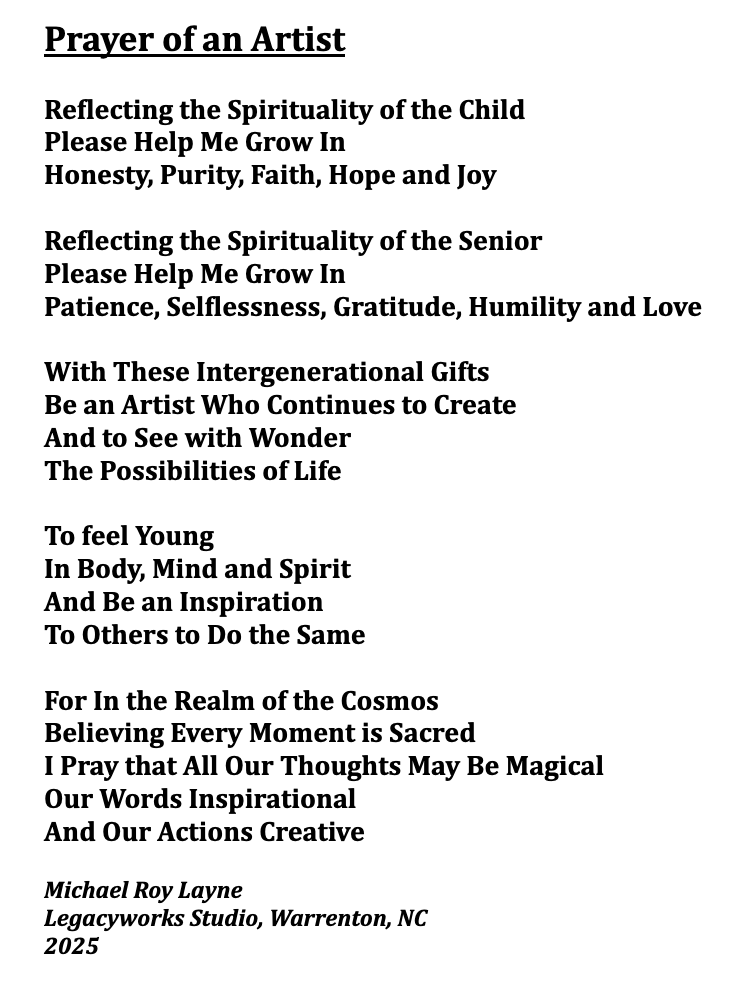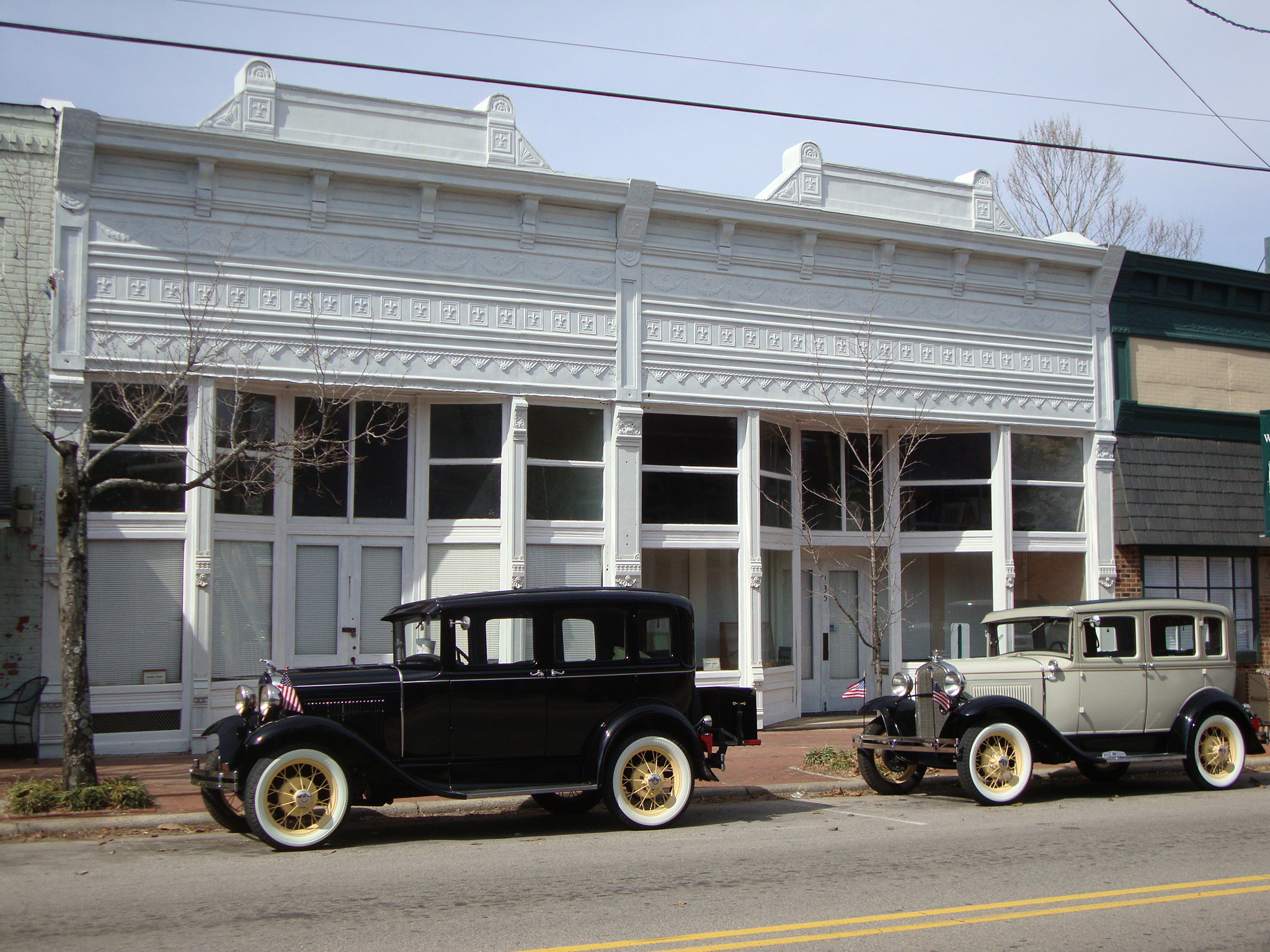Transformation + Cana Project
Site-specific environmental sculpture rainwater harvesting & garden design proposal including STEAM science and math course and ceramic art course – Chapel Hill, NC
- Design Completion Dates: May 2014 – February 2016
- Media: Concrete block, concrete pavers, butyl liner, glazed ceramic tile, metal, floor paint, Sunbrella fabric, concrete, mortar, cements, wire mesh, pea gravel, earth, sand, stone, turf, vegetable, flower & tree plantings, water recirculation system, fences and gates, and underground water storage tanks and hand water pump.
- Proposed Location: St. Thomas Moore School Internal Courtyard
- Client: Outdoor Education Committee – St. Thomas Moore School
- Dimensions: 15 ft (H) x 103 ft (W) x 133 ft (L)
- Budget: Design/teaching fee: $8,910 – Ceramic art course $5,500 – $38,400 estimate to construct environmental sculpture landscape garden design
Click to Read Full Description
This Arts-in-Education AIR proposal had three goals: (1) provide an opportunity for the school community to learn about environmental art through the creation and installation of a public outdoor sculpture that enlivened the inner courtyard and created a pleasant space for private meditation and paired teacher/counselor and student conversations; (2) create an aesthetically engineered artwork that harvested rooftop rainwater and through the application of the vessel mosaics, the transparency, reflectivity, refractivity, color, movement, sound, and forms of water would be depicted; (3) assist students to create hand-made clay tiles (tesserae) that depicted images of forms individually selected from rainwater Native American myths and collectively fabricate a linear story panel that would decorate the six vibrant mosaic rain collecting sculptural forms installed to collect and disseminate water to the outdoor classroom.
Over a two-year period, Layne conducted seven STEAM class sessions in two phases with Angela Costello’s 6th grade science and math classes. In Phase I, four environmental science and math classes spotlighted (1) environmental sculpture (art as landscape), (2) the water cycle with rainwater harvesting and stormwater management, (3) understanding the garden area with site visits and measurements, and (4) topographic modeling of the outdoor classroom/garden space. In Phase II, three social science and math classes spotlighted (1) survey design and collection, (2) survey analysis, and (3) mini in-class participatory design workshop session with photo preference survey and preferred garden elements.
Based upon an analysis of the collected data from 100+ surveys conducted with faculty, staff, parents, and students in all grade levels combined with the information collected during the Phase II class sessions. The environmental outdoor sculpture garden, Transformation, was designed to include outdoor classroom, active garden space and a labyrinth. The outdoor courtyard classroom included a three-tier seating area for 50 with a fabric covered sculptural form to protect students during high heat or rainy weather. Six 200-gallon rainwater sculptures (3 pairs) would collect rainwater from the school’s roof and direct it through water basins into small rills to a central pool within the courtyard. The water would be cleaned as it enters a 1200-gallon underground tank where a submersible pump carries the water back to the three water basins, creating a permanent recirculation water feature for the classroom area. An adjacent tool shed with solar panels on the roof would supply power to the pumps.
The outdoor garden space would be enclosed with a fence and lockable gates to ensure the gardens and water feature were protected when school was not in session. Mirroring the pattern created when a pebble is dropped into a pond, the garden layout was designed around two overlapping concentric circles. The plan alternates between planting bed rings and accessible pathway rings of permeable pavers. During high stormwater events, the overflow from the classroom underground tank would flow into another 1200-gallon underground tank located in the garden space. As there are no direct water outlets on site, both tanks would supply water to the garden area. Through the use of a large old fashion above ground hand water pump, students and staff could bring water up from the underground tank to water the vegetables, flowers. and fruit trees growing within the ring beds. The water from the underground tank would also feed the stream like water feature that crosses both the upper and lower circles of the garden design.
Based upon the pattern on the floor of Chartres Cathedral, the final feature of the inner courtyard includes a meditation labyrinth painted on the existing concrete pad also represent the actual compass layout for the school.
The Cana Project (Transformation), was developed in 5 phases (Phase I –Development, Phase II –Programs, Phase III –Design, Phase IV – Installation, and Phase V – Celebration/Dedication & Experiential Learning Curriculum). The loss of the funding source and the transfer of the school principal resulted in the cancelling of the remaining phases of the project.
Gallery
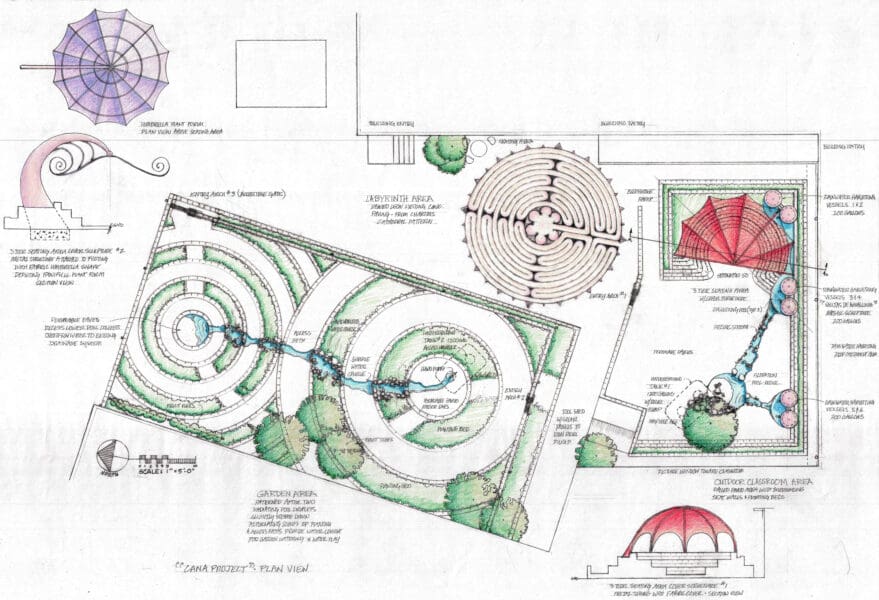
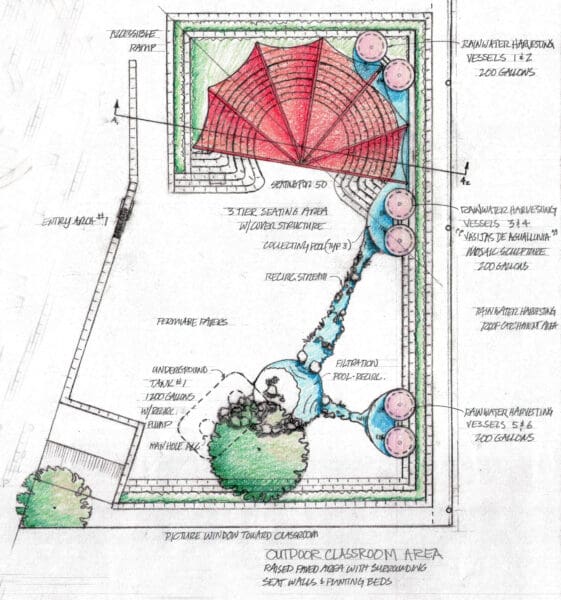
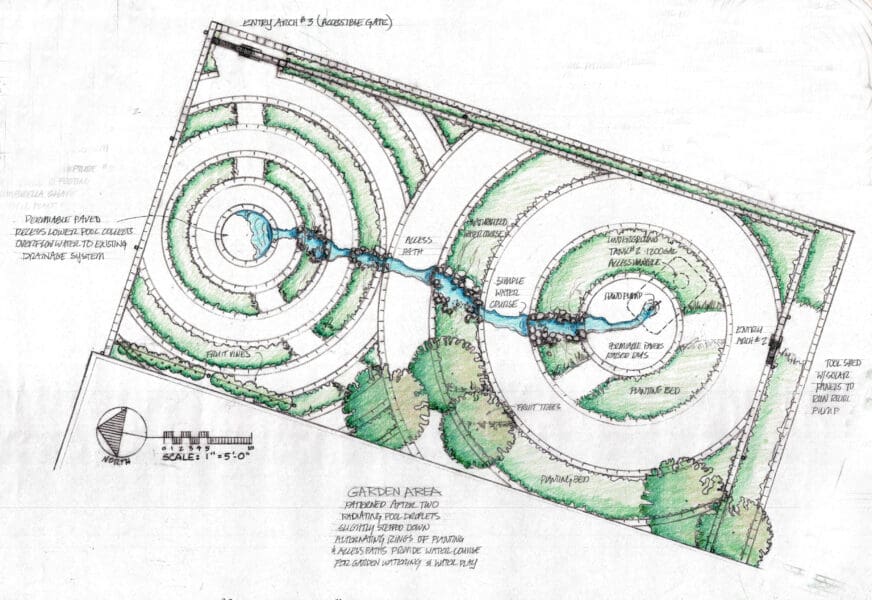
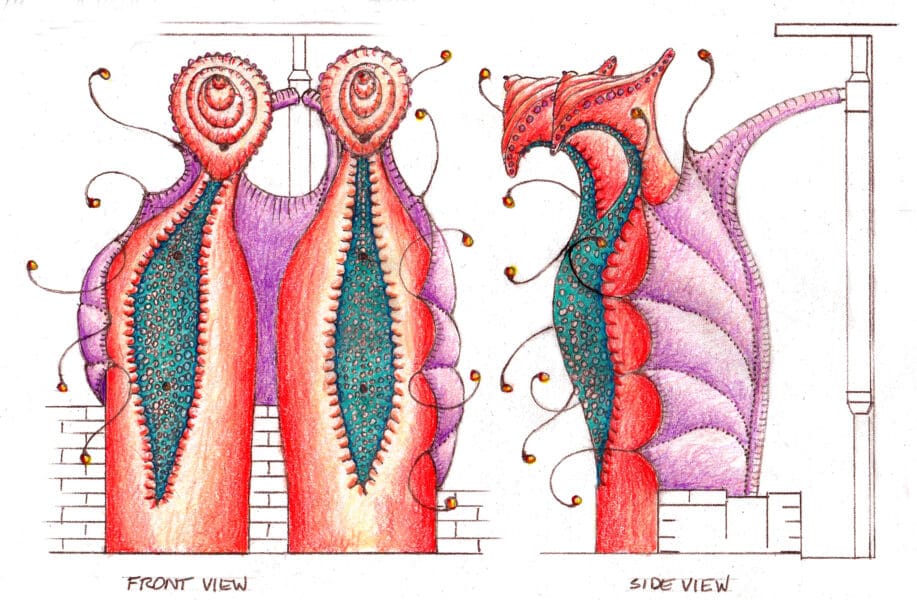
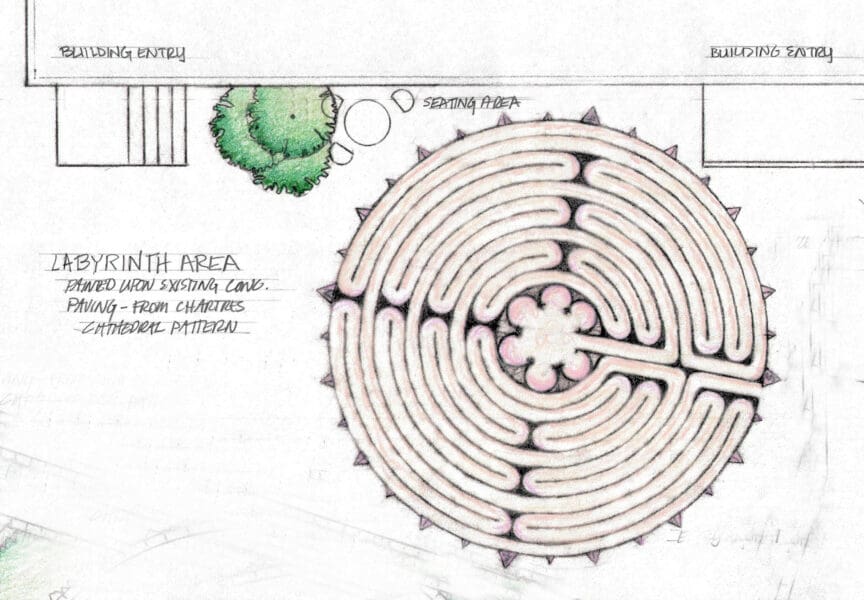
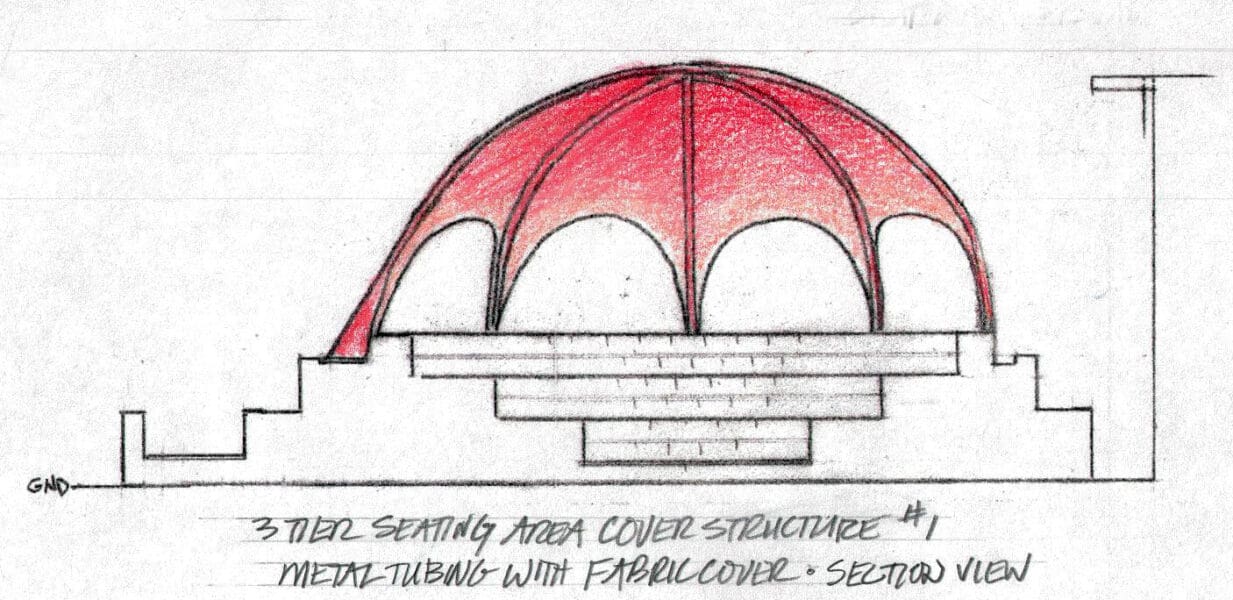
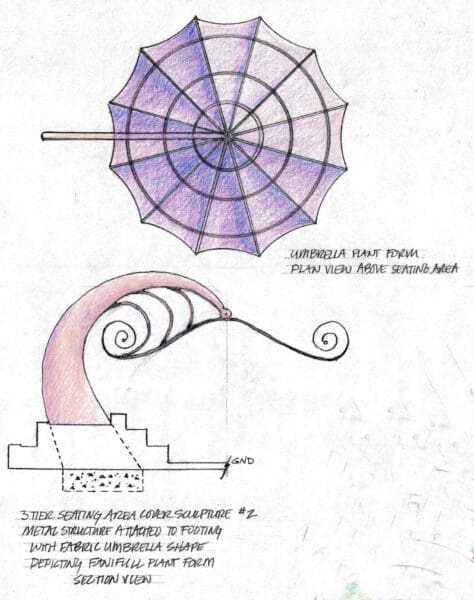
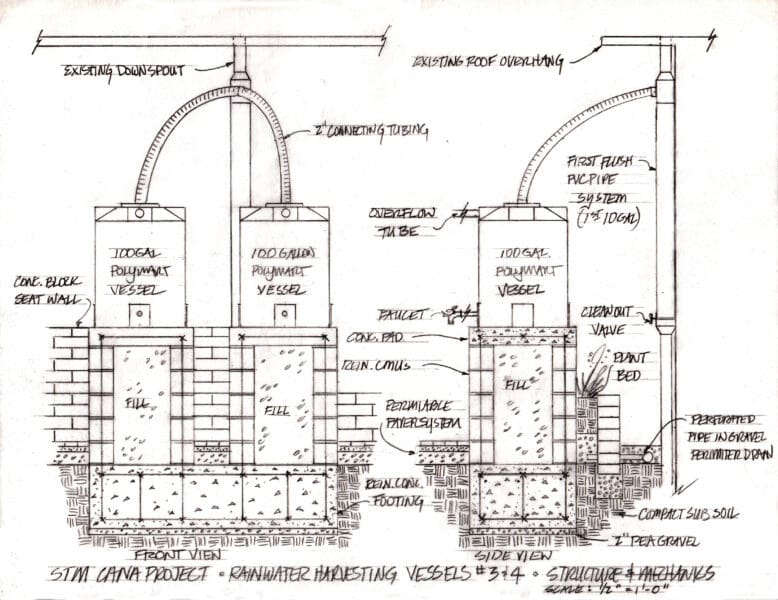
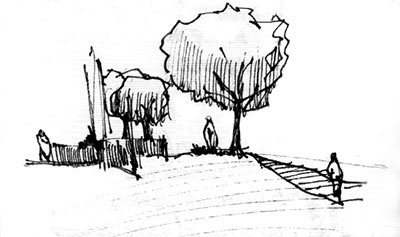
"My sculptural environments are aesthetically pleasing site-specific artworks that connect nature and culture by employing the three legacies for regenerative and sustainable design of (1) environment: natural systems, (2) education: experiential systems, and (3) engagement: cultural systems. By using a variety of art media and fabrication methods to create sculptural open spaces that are intended to support personal rejuvenation and inspiration, my sculptures provide venues for environmental learning and community celebration.”
Contact

Environment, Education, Engagement
Michael Roy Layne, Ph.D., RLA, ASLA
Environmental Sculptor • Landscape Architect • Community Artist
Studio/Workshop
135 South Main Street
Warrenton, North Carolina 27589
Office
442 S. Main Street
Warrenton, North Carolina 27589
Contact Me
